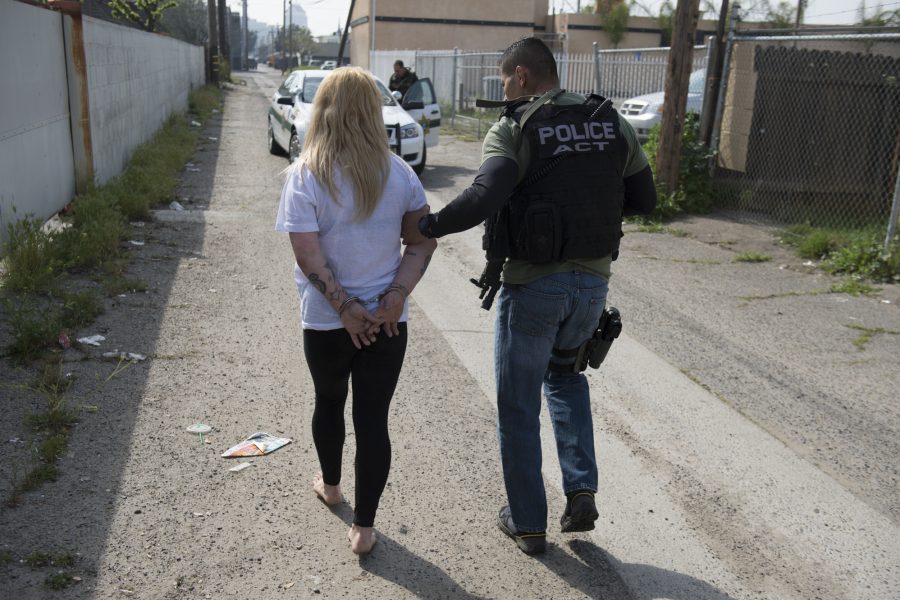According to a story in Reuters:
. . . The administration is set to remove restrictions on China’s Institute of Forensic Science in a bid to convince Beijing to step up cooperation to halt the flow of the synthetic opioid fentanyl in the United States.
Blocking fentanyl “precursor” chemicals has been a priority for Washington as the rate of overdose deaths involving the drug more than tripled from 2016 through 2021, according to the U.S. Centers for Disease Control and Prevention (CDC).
The PRC is the chief exporter of fentanyl and its precursor chemicals, however, the chemicals are also produced in India. The US has a proven track record of negotiating treaties to stem the flow of dangerous drugs through a method of enforcement known as “precursor strategy”. As Leonardo DeCaprio fans know from the movie “The Wolf of Wall Street,” the lead character Jordan Belfort played by DeCaprio was addicted to quaaludes, which as the movie progressed became harder and harder for him to obtain.
That’s because the DEA worked to identify the source countries for both quaalude production as well as the precursor chemicals necessary to manufacture quaaludes and then engaged with the State Department to negotiate treaties with the involved countries to ban or severely restrict their manufacture. As quaaludes, like fentanyl, require sophisticated and expensive manufacturing processes including well trained technicians to produce – the governmental controls were placed on legitimate chemical companies who quickly fell into compliance rather than jeopardize their businesses. The result has been that quaaludes have virtually disappeared from the US market.
The DEA engaged the same strategy with the PRC in regards to ephedrine production and importation and were successful. Ephedrine was a key precursor for the production of methamphetamine. Without it, “meth” cannot be synthesized. However, US drug companies insisted that pseudoephedrine, chemical analog of ephedrine, not be banned due to its popularity as a nasal decongestant commonly known by the brand name Sudafed as well as other cold and hay-fever medications. The compromise was that pseudoephedrine containing drugs would be moved “behind the counter” and customers would need to sign for a limited quantity from the pharmacist.
Unfortunately, a chemical process alternative was developed by amateur and some not so amateur chemists who were able to synthesize methamphetamine from pseudoephedrine. As anyone who has seen “Breaking Bad” knows, the process was relatively easy to replicate. Moving drugs “behind the counter” also failed as suppliers known as “smurfs” simply traveled from pharmacy to pharmacy buying the maximum amount of pseudoephedrine as they did and then re-selling or trading the pills to clandestine labs for finished product.
The additional precursor chemicals needed to manufacture methamphetamine are also controlled but the same smurfing techniques are used to defeat the DEA’s required sales notification system for these chemicals – all of which have legitimate commercial use.
The question is, will the rumored fentanyl treaty be a success like it was for quaaludes – or a failure like ephedrine?
Fentanyl production and distribution is a problem not just in the US but also in much of Latin America where drug distribution cartels have a destabilizing effect on governments and a fatal effect on their people. Recently Ecuador, long a stable and peaceful democracy with a large American expat community, has seen its homicide rates explode. The Wall Street Journal reported that the number of homicides this year are on track to exceed 7000 deaths – a seven-fold increase over just a few years ago. And, of course, the narcotics trade has long been a challenge for Mexico in much the same way.
If the US and the PRC are serious about controlling fentanyl they will need the other APEC countries and India at the very least to sign on with the ban.
The irony that APEC is being hosted by the US in the city of San Francisco should not be lost on anyone. San Francisco has been and remains one of the epicenters for fentanyl overdose deaths. More people in San Francisco died from fentanyl overdoses than died of Covid-19 during the pandemic and the annual deaths have continued almost unabated. The San Francisco Chronicle maintains a database for deaths in the city as well as the rest of the country which grimly reports “Drug overdoses have killed more than a million people in the U.S. since 1999, with the majority of the fatalities driven by opioids, including the supremely powerful synthetic painkiller fentanyl.”
The “war on drugs” metaphor is currently an unpopular one in progressive circles, but I’m not sure how else to define an illegal substance and its distribution system that flouts US laws and in 24 years has killed one million Americans.
We certainly don’t need politically driven loopholes like those that allow methamphetamine to continue unabated by a system of industry exemptions in the form of political compromises with a country that has consistently proven its unwillingness to abide by the rule of law. If the PRC is serious – let’s hold them accountable and draft a treaty that actually saves lives – rather than one that helps kill more of us.
Steve Smith is a senior fellow in urban studies at the Pacific Research Institute.


